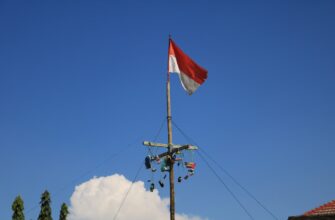Understanding Bali Rupiah to USD Conversion
Navigating the Bali rupiah to USD conversion is essential for any traveler visiting Indonesia’s island paradise. As Indonesia’s official currency, the rupiah (IDR) fluctuates daily against the US dollar (USD), with exchange rates influenced by global markets, tourism demand, and local economic factors. As of 2024, 1 USD typically converts to approximately 15,000–16,000 IDR, but rates vary between providers. Understanding this conversion helps you budget wisely for Bali’s beaches, temples, and vibrant culture while avoiding unnecessary fees.
Best Places to Convert USD to Rupiah in Bali
Choosing where to exchange money in Bali significantly impacts your conversion rate and security. Avoid airport kiosks and hotel desks – they offer poor rates. Instead:
- Authorized Money Changers (Kantor Tukar Uang): Look for PT Central Kuta or BMC-branded booths in tourist hubs like Seminyak, Ubud, and Kuta. They display live rates and provide receipts.
- Bank Branches: Banks like BCA or Mandiri offer reliable rates with lower commissions. Bring your passport for transactions.
- Reputable Local Shops: Some jewelry or convenience stores in busy areas provide competitive rates – verify they use calculators and count money visibly.
Always count cash before leaving and avoid “too good to be true” offers – they often involve hidden fees or scams.
Tips for Getting the Best Exchange Rate in Bali
Maximize your USD when converting to Indonesian rupiah with these strategies:
- Monitor Rates Online: Check sites like XE.com or Wise before exchanging to know fair market values.
- Exchange in Larger Sums: Smaller transactions incur higher relative fees. Convert $200+ at once for better rates.
- Carry Crisp USD Bills: Exchange counters reject torn or old banknotes. Bring $50 or $100 bills for optimal rates.
- Negotiate: Some independent changers adjust rates slightly for larger amounts – politely ask for their “best rate.”
Using Credit Cards and ATMs in Bali
While cash is king in Bali’s markets and warungs, cards offer backup convenience:
- ATMs: Withdraw IDR directly using international cards (Visa/Mastercard). Opt for bank-affiliated ATMs to avoid skimmers. Expect 3–5% bank fees plus potential home-country charges.
- Credit Cards: Accepted at hotels and upscale restaurants. Notify your bank of travel plans to prevent blocks. Dynamic Currency Conversion (DCC) scams are common – always choose to pay in IDR.
- Digital Wallets: Apps like GoPay or OVO are popular for rides and cafes but require local SIM registration.
Avoiding Common Currency Exchange Scams
Stay vigilant against these Bali currency traps:
- Rigged Calculators: Scammers alter calculator totals during counting. Verify amounts manually or use your phone’s calculator.
- Bait-and-Switch: After agreeing on a rate, staff claim “no small bills” and offer worse terms. Walk away immediately.
- Fake Bills: Receive counterfeit IDR notes. Familiarize yourself with rupiah security features before traveling.
- Distraction Tactics: Teams work together to confuse you during counting. Count slowly and refuse interruptions.
Bali Rupiah to USD Conversion FAQ
Q: What’s the current USD to IDR exchange rate in Bali?
A: Rates fluctuate daily. As of 2024, 1 USD ≈ 15,000–16,000 IDR. Check live rates via financial apps before exchanging.
Q: Should I exchange money before arriving in Bali?
A: Only convert a small amount for initial expenses (e.g., taxi fare). You’ll get significantly better rates locally in Bali.
Q: Are USD widely accepted in Bali?
A: No. While some hotels or dive shops take USD, rupiah is mandatory for most transactions. Vendors often inflate USD prices.
Q: How much cash should I carry daily in Bali?
A: Budget 500,000–1,000,000 IDR ($35–$65) per day for meals, transport, and activities, excluding accommodation.








